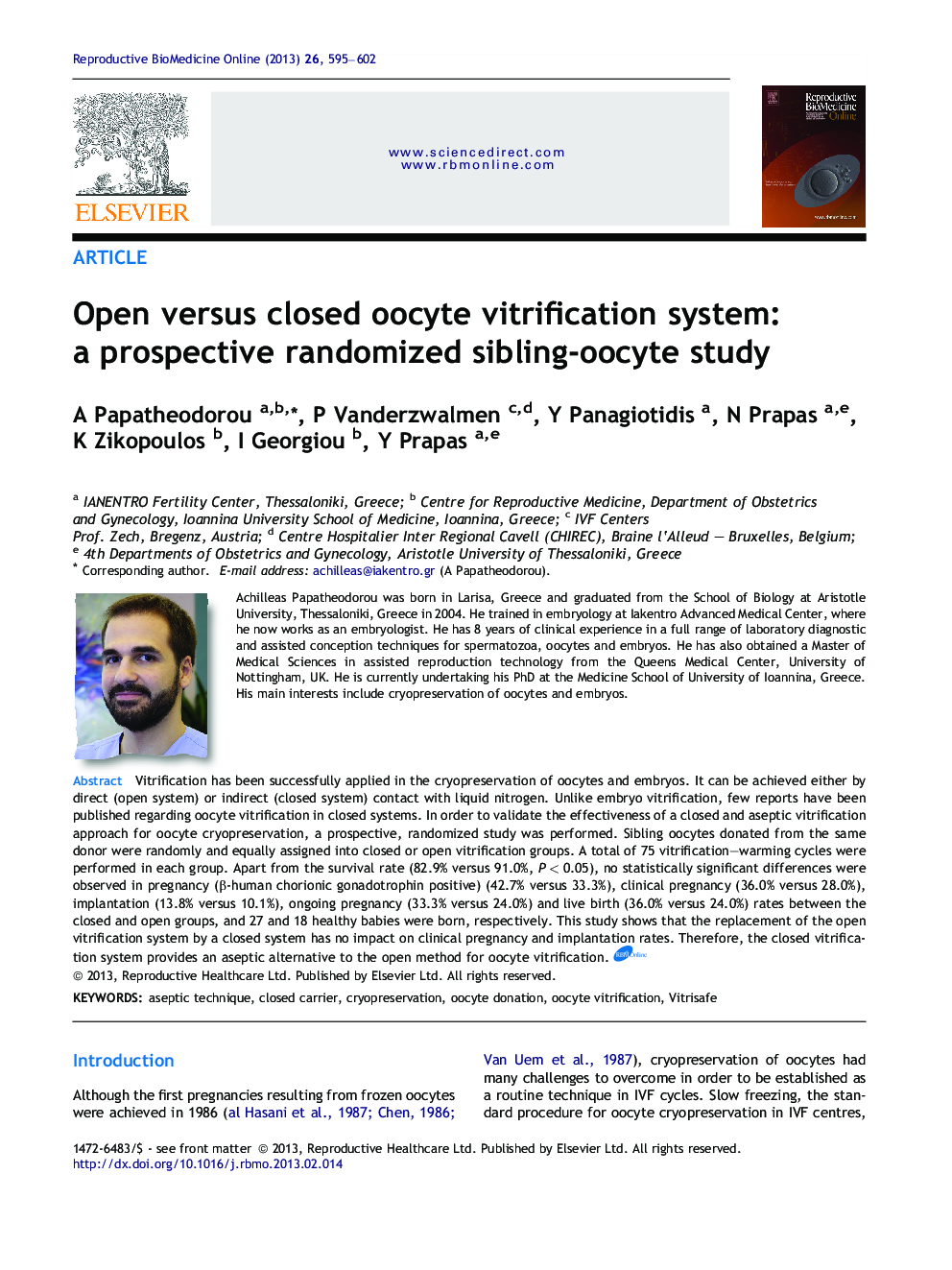| Article ID | Journal | Published Year | Pages | File Type |
|---|---|---|---|---|
| 6189154 | Reproductive BioMedicine Online | 2013 | 8 Pages |
Vitrification has been successfully applied in the cryopreservation of oocytes and embryos. It can be achieved either by direct (open system) or indirect (closed system) contact with liquid nitrogen. Unlike embryo vitrification, few reports have been published regarding oocyte vitrification in closed systems. In order to validate the effectiveness of a closed and aseptic vitrification approach for oocyte cryopreservation, a prospective, randomized study was performed. Sibling oocytes donated from the same donor were randomly and equally assigned into closed or open vitrification groups. A total of 75 vitrification-warming cycles were performed in each group. Apart from the survival rate (82.9% versus 91.0%, P < 0.05), no statistically significant differences were observed in pregnancy (β-human chorionic gonadotrophin positive) (42.7% versus 33.3%), clinical pregnancy (36.0% versus 28.0%), implantation (13.8% versus 10.1%), ongoing pregnancy (33.3% versus 24.0%) and live birth (36.0% versus 24.0%) rates between the closed and open groups, and 27 and 18 healthy babies were born, respectively. This study shows that the replacement of the open vitrification system by a closed system has no impact on clinical pregnancy and implantation rates. Therefore, the closed vitrification system provides an aseptic alternative to the open method for oocyte vitrification.Recently, the need for oocyte cryopreservation has increased due to a number of medical and social reasons. Vitrification is the most efficient technique for cryopreserving oocytes. A main characteristic of this successful technique is the direct contact of the oocytes with liquid nitrogen, which increases cooling rates. Since there are many concerns of contamination hazards due to this direct contact, the need for finding an appropriate aseptic way for vitrifying oocytes has arisen. In aseptic vitrification methods, the direct contact with liquid nitrogen is avoided but the cooling rates are decreased. Therefore the efficiency of this technique can be questioned. In order to validate the effectiveness of an aseptic vitrification approach for oocyte cryopreservation, a prospective randomized study was performed. Oocytes donated from the same donor were randomly and equally assigned to two groups. In one group, oocytes were vitrified in an aseptic way (closed system) and in the other group, oocytes were vitrified in an non-aseptic way (open system). A total of 75 vitrification-warming cycles were performed in each group. The biological and clinical results in the two groups were similar, and 27 and 18 healthy babies were born in the closed and open groups. This study shows that the replacement of the open vitrification system by a closed system has no impact on the pregnancy and implantation rates. Therefore, the closed vitrification system may be an alternative for oocyte vitrification in an aseptic way.
